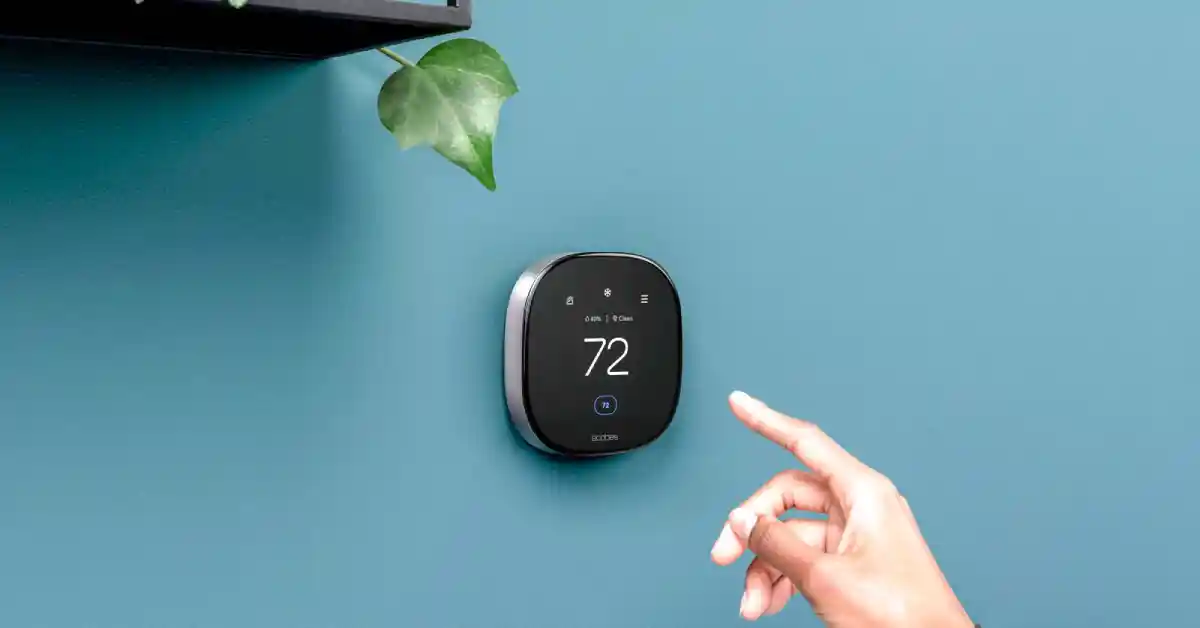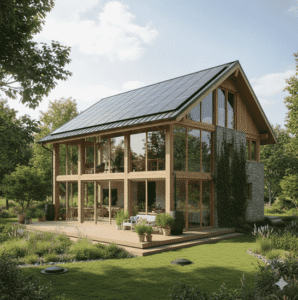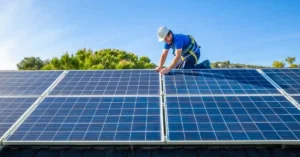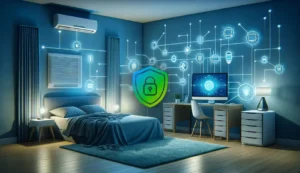Introduction: Smarter Climate Control for Modern Homes
Heating and cooling make up nearly 50% of a home’s energy use. In 2025, smart thermostats and high-efficiency HVAC systems are transforming how homeowners manage comfort and costs.
Beyond savings, these upgrades can improve indoor air quality, extend equipment life, and even impact homeowners insurance. Insurers increasingly reward smart devices that reduce fire, freeze, and water-damage risks.
This guide explains the role of smart thermostats and HVAC upgrades in modern homes, including costs, benefits, insurance implications, and the latest trends.
What Are Smart Thermostats & HVAC? (Quick Answer)
Smart thermostats and HVAC systems use advanced technology to automatically control heating and cooling for improved comfort, energy savings, and risk reduction.
- Smart thermostats: Wi-Fi-enabled devices that learn user preferences, allow remote control, and optimize energy use.
- High-efficiency HVAC: Heating, ventilation, and air conditioning systems designed to reduce energy consumption by 20–40%.
- Integrated systems: Combine sensors, zoning, and automation to maximize efficiency.
Why Smart Thermostats & HVAC Matter in 2025
- High energy costs: U.S. households spend about $1,100 annually on heating and cooling.
- Savings: Smart thermostats cut costs by 10–15%; efficient HVAC saves $500–$1,000 annually.
- Comfort: Precise zoning keeps different parts of the home at ideal temperatures.
- Insurance: Leak detection, freeze prevention, and fire risk reduction can qualify for premium discounts.
- Sustainability: Lower carbon footprint through reduced energy use.
Average Costs & Savings in 2025
| Upgrade | Average Cost | Annual Savings | ROI Timeline | Insurance Impact |
| Smart Thermostat | $200–$500 | $150–$250 | 1–2 years | Moderate (freeze/fire risk reduction) |
| High-Efficiency HVAC | $6,000–$12,000 | $500–$1,000 | 6–8 years | Moderate (safer, newer equipment) |
| Zoned HVAC System | $10,000–$15,000 | $600–$1,200 | 8–10 years | Moderate |
| HVAC + Smart Sensors | $500–$2,000 (add-on) | $200–$400 | 2–3 years | Low–Moderate |
Insurance & Coverage Considerations
- Smart thermostat benefits: Prevents frozen pipes, reduces fire risks by shutting off HVAC in emergencies. Some insurers offer discounts (5–10%).
- HVAC replacement: New systems lower risk of breakdowns and damage but increase replacement value, requiring higher dwelling coverage.
- Coverage exclusions: Insurance doesn’t cover the cost of upgrades themselves but protects against covered perils (fire, storm, theft).
- Manufacturer warranties: Smart thermostats (2–5 years) and HVAC systems (10–15 years) often overlap with insurance protections.
Installation: DIY vs Contractor
- Smart thermostats: Some models are DIY-friendly, but wiring mistakes can cause system failure or void warranties.
- HVAC systems: Always require licensed contractors for installation, inspections, and code compliance.
- Permits: Most regions require permits for HVAC replacements or zoning modifications.
Trends in 2025
- AI-driven learning: Thermostats predict usage patterns for maximum savings.
- Voice integration: Works with Alexa, Google Assistant, and Apple Home.
- Geofencing: Adjusts temperature automatically when homeowners leave or return.
- Indoor air quality (IAQ) features: Sensors monitor humidity, allergens, and CO₂.
- Hybrid HVAC systems: Combine electric and gas for efficiency and flexibility.
- Smart HVAC maintenance: Systems send alerts before breakdowns, reducing claims.
Real-World Examples
- Chicago Family: Installed a $400 smart thermostat and saved $200 annually. Their insurer offered a 7% discount for freeze-prevention features.
- Florida Homeowner: Replaced a 15-year-old HVAC for $9,500. Savings: $800 per year in bills and $150 in insurance discounts.
- Arizona Retiree: Zoned HVAC installation cut cooling costs by $1,200 annually while maintaining stable humidity levels.
Benefits Beyond Savings
- Health: Better IAQ reduces asthma/allergy risks.
- Convenience: Remote access from smartphones.
- Longevity: Smart monitoring extends HVAC system life by 20–30%.
- Resale: Homes with energy-efficient HVAC and smart controls sell faster.
Challenges of Smart Thermostats & HVAC
- Upfront costs: HVAC replacement is a major investment.
- Compatibility issues: Older systems may need upgrades before adding smart thermostats.
- Maintenance needs: Filters, sensors, and software updates must be managed.
- Cybersecurity risks: Smart devices can be vulnerable to hacking if unsecured.
Tips for Homeowners in 2025
- Always check compatibility before buying a smart thermostat.
- Use licensed HVAC contractors for installation to maintain warranties and insurance compliance.
- Update your homeowners policy after upgrading HVAC to reflect replacement costs.
- Take advantage of federal and state incentives for high-efficiency systems.
- Combine smart thermostats with leak/freeze detection sensors for maximum insurance savings.
Key Takeaways
- Smart thermostats & HVAC upgrades lower energy bills, improve comfort, and may earn insurance discounts.
- Costs range from $200 to $15,000, but savings and incentives improve ROI.
- Professional installation is critical for HVAC systems.
- Emerging trends include AI-driven learning, zoning, and IAQ monitoring.
- Homes with smart HVAC systems have higher resale value and greater resilience.




